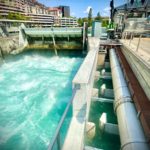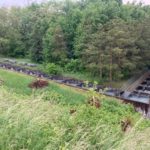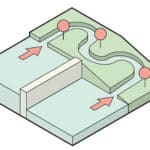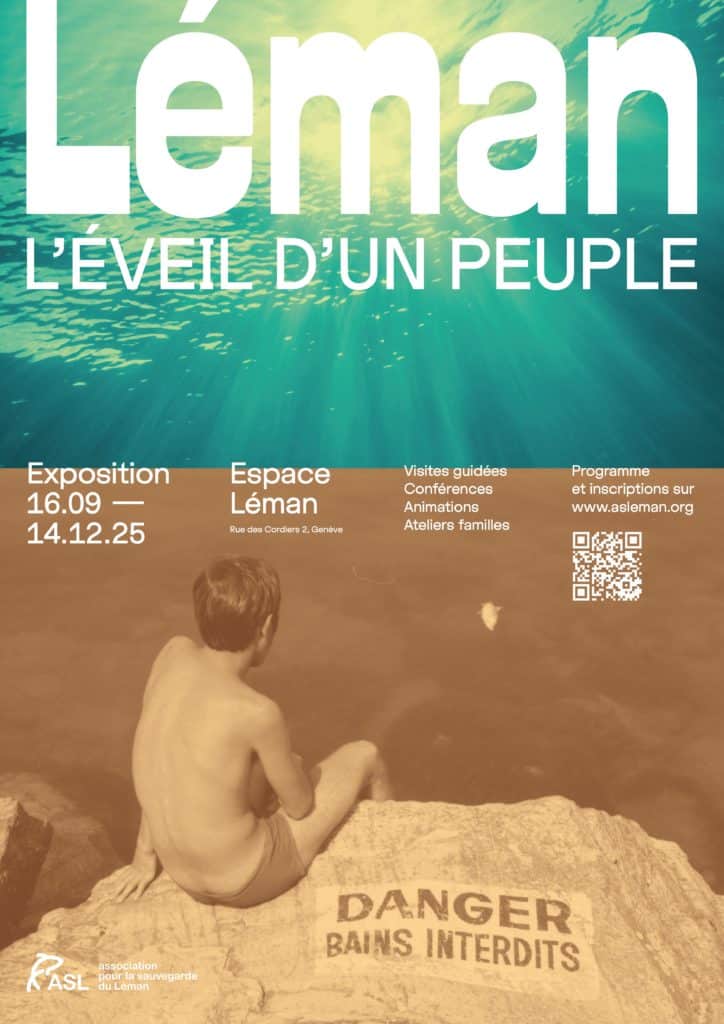Hydroelectricity, the main source of renewable energy in Switzerland, comes from different types of dam. There are reservoir dams, mainly in the Alps, which store a volume of water and generate electricity when demand is high (like the Grande Dixence dam). What about the impact on biodiversity? The main impact is the disruption of the bedload regime (displacement of sand, gravel, stones, etc.), which can destroy spawning grounds for species such as the brown trout.
There are also run-of-river dams, such as those at Lavey (VD) and Le Seujet (GE), which do not store energy but generate it continuously using the current of the water. On the French side, the mechanical energy of the Dranse is also harnessed in three run-of-river power stations. For this type of dam, the impact on biodiversity concerns fish species that are used to migrating upstream (upstream) or downstream (downstream) of rivers. Some species need a specific habitat to spawn, or prefer cold water during periods of extreme heat (made more frequent by global warming).
To remedy these problems, solutions such as bypass rivers or fish passes have been put in place. Unfortunately, these solutions are not sufficiently developed. A 2023 report by the Federal Office for the Environment (FOEN) estimated that more than 1,000 hydroelectric power stations in Switzerland impede fish migration and should be cleaned up by 2030, in accordance with current legislation.
While these infrastructures play a central role in the energy transition, they also raise major ecological issues for aquatic biodiversity.
📷 : © ASL, dra/20 minutes, OFEV






